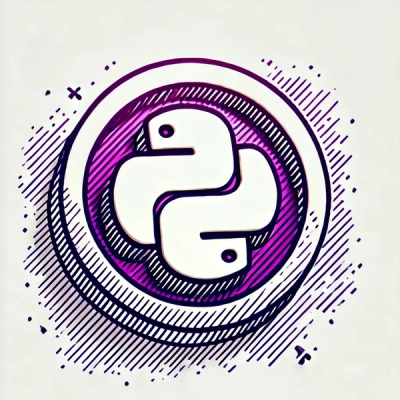@equinor/document-internationalization
All new rewrite exclusively for Sanity Studio v3

What this plugin solves
There are two popular methods of internationalization in Sanity Studio:
- Document-level translation
- A unique document version for every language
- Joined together by references in a
translation.metadata document
- Best for documents that have unique, language-specific fields and no common content across languages
- Best for translating content using Portable Text
- Field-level translation
- A single document with many languages of content
- Achieved by mapping over languages on each field
- Best for documents that have a mix of language-specific and common fields
- Not recommended for Portable Text
This plugin adds features to the Studio to improve handling document-level translations.
- A Language Selector to create and browse language-specific versions of a Document
- Hooks and components to use throughout your custom components to handle translations
- Document Badges to highlight the language version of a document
For field-level translations you should use the sanity-plugin-internationalized-array.
Many projects use both
An example of document-level translation could be a lesson schema, the title, slug and content fields would be unique in every language.
A good use of field-level translation could be a person schema. It could have the same name and image in every language, but only the biography would need translating.
Upgrade
See the upgrade guide for instructions on how to upgrade from the previous version of Document Internationalization.
Install
npm install --save @equinor/document-internationalization
Usage
Add it as a plugin in sanity.config.ts (or .js):
Basic configuration
The only required configuration is:
- The
supportedLanguages array and
- The
schemaTypes array
import {createConfig} from 'sanity'
import {documentInternationalization} from '@equinor/document-internationalization'
export const createConfig({
plugins: [
documentInternationalization({
supportedLanguages: [
{id: 'es', title: 'Spanish'},
{id: 'en', title: 'English'}
],
schemaTypes: ['lesson'],
})
]
})
Advanced configuration
The plugin also supports asynchronously retrieving languages from the dataset, modifying the language field, adding a bulk publishing feature and adding additional fields to the metadata document.
import {createConfig} from 'sanity'
import {documentInternationalization} from '@sanity/document-internationalization'
export const createConfig({
plugins: [
documentInternationalization({
supportedLanguages: [
{id: 'nb', title: 'Norwegian (Bokmål)'},
{id: 'nn', title: 'Norwegian (Nynorsk)'},
{id: 'en', title: 'English'}
],
schemaTypes: ['lesson'],
languageField: `language`
weakReferences: true
bulkPublish: true
metadataFields: [
defineField({ name: 'slug', type: 'slug' })
],
apiVersion: '2023-05-22'
})
]
})
Language field
The schema types that use document internationalization must also have a string field type with the same name configured in the languageField setting. Unless you want content creators to be able to change the language of a document, you may hide or disable this field since the plugin will handle writing patches to it.
defineField({
name: 'language',
type: 'string',
readOnly: true,
hidden: true,
})
Excluding fields
The default behaviour of this plugin when creating a new translation is to duplicate the originating document, which is useful for then translating the fields directly in the new document - perhaps with Sanity AI Assist. However, sometimes you may want to exclude certain fields from being copied to the new document. You can do this by updating your schema to exclude certain types or fields with options.documentInternationalization.exclude:
defineField({
name: 'title',
title: 'Title',
type: 'string',
options: {
documentInternationalization: {
exclude: true,
},
},
}),
Querying translations
Querying with GROQ
To query a single document and all its translations, we use the references() function in GROQ.
// All `lesson` documents of a single language
*[_type == "lesson" && language == $language]{
title,
slug,
language,
// Get the translations metadata
// And resolve the `value` reference field in each array item
"_translations": *[_type == "translation.metadata" && references(^._id)].translations[].value->{
title,
slug,
language
},
}
Querying with GraphQL
Fortunately, the Sanity GraphQL API contains a similar filter for document references.
query GetLesson($language: String!, $slug: String!) {
allLesson(
limit: 1
where: {language: {eq: $language}, slug: {current: {eq: $slug}}}
) {
_id
title
language
slug {
current
}
}
}
query GetTranslations($id: ID!) {
allTranslationMetadata(where: {_: {references: $id}}) {
translations {
_key
value {
title
slug {
current
}
}
}
}
}
Note on document quotas
In previous versions of this plugin, translations were stored as an array of references on the actual documents. This required a base language, lead to messy transaction histories and made deleting documents difficult.
In this version of the plugin, translations of a document are stored as an array of references in a separate document of the type translation.metadata, and one is created for every document that has translations. A document with no translations will not have a metadata document.
This means if you have 100 documents and they are all translated into 3 languages, you will have 400 documents. Keep this in mind for extremely high-volume datasets.
Documentation
For more advanced topics see the documentation. For installation see Usage.
License
MIT © Sanity.io
Develop & test
This plugin uses @sanity/plugin-kit
with default configuration for build & watch scripts.
See Testing a plugin in Sanity Studio
on how to run this plugin with hot reload in the studio.
Release new version
Run "CI & Release" workflow.
Make sure to select the main branch and check "Release new version".
Semantic release will only release on configured branches, so it is safe to run the release on any branch.




